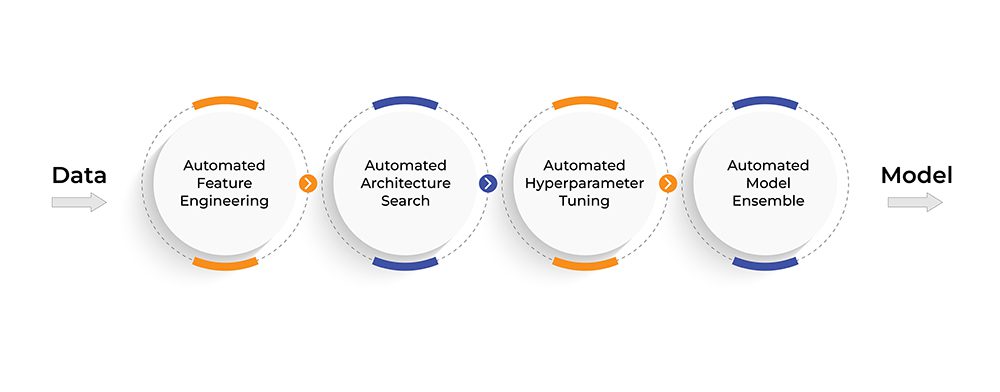NLP is much more than a trending buzzword—it’s a transformative technology that allows publishers to leverage the power of language at scale. Through sophisticated algorithms, NLP can analyze massive amounts of text, identify patterns, and generate human-like content. Within publishing, NLP is being used to automate labor-intensive tasks like content categorization, metadata tagging, and sentiment analysis, freeing up valuable editorial time for more creative and strategic work.
Tools like iNLP showcase how NLP can further assist by evaluating and assessing the quality of language in submissions, ensuring that manuscripts meet certain linguistic standards. Such capabilities are essential in maintaining consistency and quality in large-scale content production, particularly in academic and scientific publishing.
The Benefits of Using NLP for Content Creation and Management
NLP-powered tools offer a range of benefits for publishers looking to streamline content creation and management. Automated content generation, for example, helps speed up the production process by producing high-quality drafts based on predefined inputs. These drafts can then be edited and fine-tuned by human writers, reducing the time and effort required to create engaging content.
In addition to improving efficiency, Understanding Natural Language Processing tools provide deeper, data-driven insights into reader behavior and preferences. By analyzing reader interactions, publishers can identify which topics resonate most, allowing them to tailor future content accordingly. NLP can also help optimize content structure, making articles more engaging and ensuring they meet SEO and readability standards.
These tools enhance not just the quantity but the quality of content, delivering a better reading experience while saving time and resources. Whether it’s through real-time language analysis or sentiment-driven feedback, NLP enables publishers to make informed, data-backed decisions that boost content performance and reader satisfaction.
How NLP Enhances Editorial Workflows and Collaboration
NLP’s impact on editorial workflows is profound, offering new ways to optimize and automate processes. For instance, NLP can assist editors by providing real-time suggestions for improving text clarity, grammar, and style. This AI-powered feedback enables faster revisions and helps maintain consistency across large-scale content production.
Collaboration within editorial teams also becomes more efficient with NLP-driven tools. Automated workflows, such as task delegation and revision tracking, ensure that content moves seamlessly from one team member to another, reducing bottlenecks in the production cycle. Additionally, tools like iNLP can be integrated into these workflows to assess language quality, providing editors and authors with data-backed feedback on readability, tone, and linguistic precision.
This advanced level of automation not only reduces manual work but also empowers teams to collaborate more effectively, ensuring a faster and more streamlined path from content creation to publication.
Implementation of NLP in the Publishing Industry
Several forward-thinking publishers are already reaping the benefits of NLP through innovative implementations. From using NLP to generate summaries of long-form content to employing it for automated fact-checking, publishers are finding new ways to leverage the technology.
For example, Pearson, a leader in academic publishing had adopted NLP-driven language assessment tools, such as iNLP, to evaluate submissions for grammatical accuracy and linguistic quality before peer review. This early intervention ensures a smoother review process and improves the overall quality of published work.
NLP tools can be used to analyze reader sentiment, allowing media outlets to deliver more targeted, personalized content based on real-time feedback.
The Future of Content Creation: Trends Shaping the Use of NLP in Publishing
As NLP technology continues to evolve, its role in publishing will only expand. Future trends include AI-driven content personalization, where NLP can dynamically adapt articles and recommendations based on individual reader preferences. Predictive analytics will also play a bigger role, allowing publishers to anticipate reader behavior and tailor content strategies accordingly.
Moreover, advancements in Understanding Natural Language Processing will lead to more sophisticated content generation tools, enabling fully automated, high-quality content production. As these tools become more refined, publishers will be able to produce larger volumes of customized content without sacrificing quality or relevance.
Emerging technologies, such as the iNLP AI Language Assessment, are at the forefront of these innovations, pushing the boundaries of what’s possible in editorial automation, language precision, and content quality.
Conclusion: Embrace Advanced NLP to Transform Your Publishing Strategy Today
NLP is no longer just an emerging technology; it’s a critical tool for modernizing publishing workflows and staying competitive in a rapidly changing industry. Whether you’re looking to streamline content management, enhance editorial collaboration, or create more personalized reader experiences, NLP offers a range of solutions that can elevate your publishing strategy.
By embracing advanced NLP tools like iNLP, publishers can unlock new efficiencies, improve content quality, and deliver more impactful reader experiences. Now is the time to integrate NLP into your workflows and capitalize on the transformative potential of AI in publishing.




